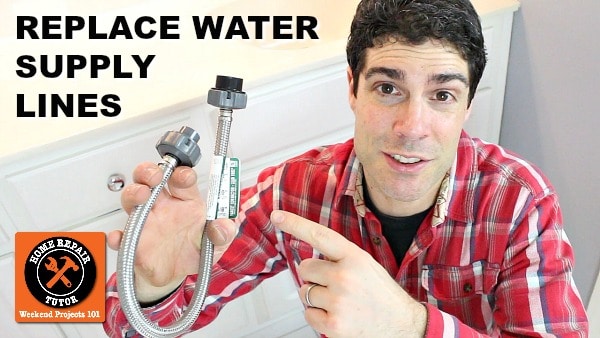Did you know Bathroom water supply lines should be replaced every 10 years?
The reason is because they can leak and create tons of water damage.
So today’s tutorial will show how to replace water supply lines, specifically for toilets and sink faucets.
We’ll discuss common leak points and show what water connectors make this super easy.
Let’s dive in!
Replace Bathroom Water Supply Lines Without Leaks
One of the biggest problems when swapping out water supply lines is knowing how tight the connections should be.
Obviously this is important to prevent water leaks.
Most directions say to hand tighten then use a wrench for the last 1/4 to 1/2 turn.
But my hand tighten is different from your hand tighten…and certainly the same goes for the Rock (who probably doesn’t need a wrench!).
Fluidmaster has great water connectors with Click Seal technology. Btw, we’re partnering with Fluidmaster because they make fantastic products that we’ve been using for years.
I recommend Click Seal connectors because they work like gas caps and click when they’re tight enough. Very cool.
Here’s the deal, no tools are needed with the faucet Click Seal connectors but you do need a wrench for the toilet version – just for the shutoff valve side.
Plus, if you’re not sure what size nut connects the existing supply line to the shutoff valve get the Universal Kit. It has adapters for three common sizes of shut off valve.
Watch our video to see how to replace bathroom water supply lines and do it without leaks
What’s Next
ClickSeal connectors make swapping out water supply lines much easier.
They’re available at Ace Hardware, Amazon, Home Depot, and Lowe’s.
Amazon carries all the different Click Seal items, just be sure to get the right size:
Toilet Click Seal Universal Kit
Faucet Click Seal Universal Kit
Hopefully, this tutorial was helpful and saves you some time and money.
If you need more under sink plumbing tips check out this tutorial.
Cheers,
Jeff



